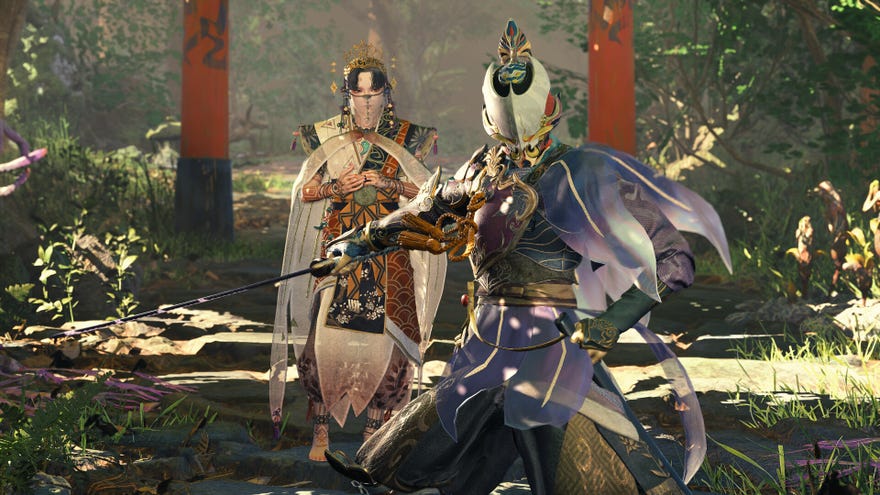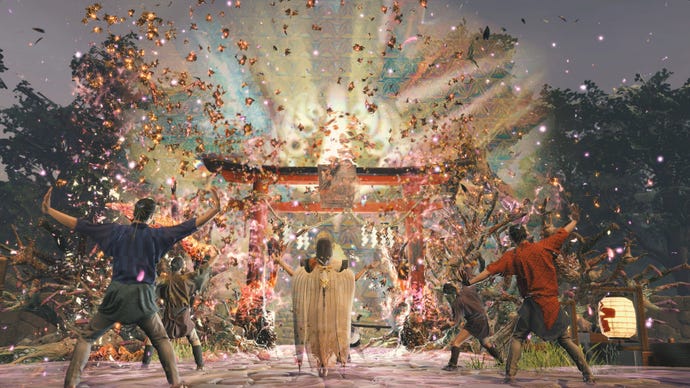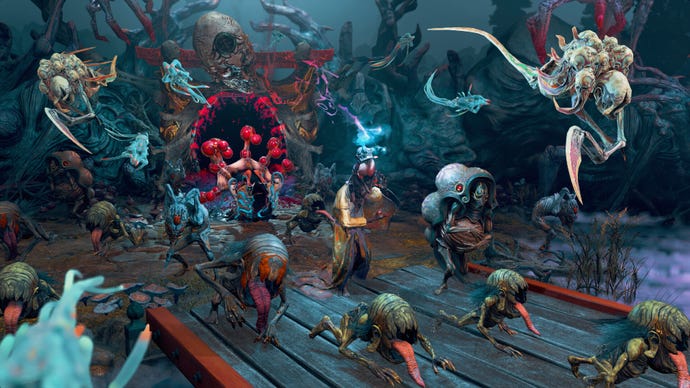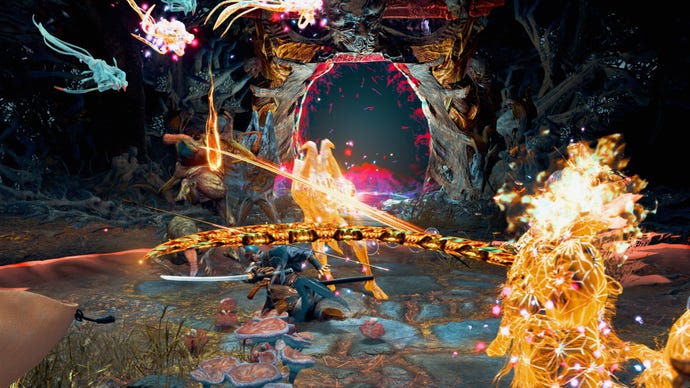HomeFeaturesKunitsu-Gami: Path of the Goddess
Kunitsu-Gami: Path Of The Goddess was the best game I played at Summer Game FestAction-strategy with incredible spirit
Action-strategy with incredible spirit
Image credit:Capcom
Image credit:Capcom

Image credit:Capcom

Kanitsu-Gami doesn’t look like a tower defender and I very much doubt it was actually conceived as one. Probably, the above paragraph is a massive misrepresentation of Capcom’s influences here, but you can’t deny the mechanical and structural parallels. It’s a forest purgation ceremony masquerading as an action-strategygame - a lush and graceful piece of tactical choreography, in which costumed figures slowly and elaborately drive back an army of fleshy, flourescent spirits who invade through a Tori gate at each map’s far end.
Key to this endeavour is Yoshiro, a priestess with the ability to cleanse Tori gates and seal away the evil for good. In order for Yoshiro to do this, however, she needs somebody to chop a path to the gate through each map’s swirling carpet of corruption, then protect her while she sways and shimmers along it, at approximately the speed of a dying snail.
That’s your job as Soh, a masked warrior equipped with a tasselled sword that can purge objects or possessed villagers of defilement. Slaying spectres and ridding the locals of demongunk earns you spirit orbs, which are expended both to cut open the way for Yoshiro and to transform rescued villagers into fighters of various kinds, whom you can position along the route to intercept the demons. Play follows a day and night cycle, corresponding to a preparation and combat phase: Yoshiro only moves when the sun is out, while the demons only attack in darkness, and the basic challenge, of course, is to gather spiritual energy efficiently and distribute it carefully between Yoshiro and those who guard her steps.
Kunitsu-Gami: Path of the Goddess - Gameplay Deep DiveWatch on YouTube
Kunitsu-Gami: Path of the Goddess - Gameplay Deep Dive

The map layout creates a natural-feeling escalation: the closer Yoshiro is to the gate, the closer she is to the horde and the greater the risk of her being surrounded, as gibbering phantoms spill out in all directions and disappear down looping sidelanes. Importantly, each corrupted gate is engulfed in a raging mist that damages players while rendering the ghosts invulnerable, so you can’t just stand there like Gimli on the parapet at Helm’s Deep, axing the nasties as they cross the threshold. It’s not always a good idea to have Yoshiro advance continuously when the sun is up, either. If you’re underprepared, you might want to ask her to halt before she wanders into an obvious chokepoint. Equally, if you’re feeling confident you can fast-forward the seconds till dusk.
Between maps, you’ll pitch camp and pour winnings of various kinds into new sword skills, NPC class upgrades, and nuggets of lore. You’ll also have the chance to talk to Yoshiro, offering her sweets in return for power-ups. I found it amusing to watch her eat them, mostly for the contrast between her delicate table manners and the lip-smacking ribaldry of campfire cooking inMonster Hunter Wilds, which Capcom were showing in the next booth along.
Image credit:Capcom


It’s unabashedly ornate to the point of unreadable, and the ornateness is more than set dressing - it speaks to the game’s status as a ritual, where questions of cosmetics are of otherworldly importance, and going through the motions of an “attack” or “preparation” phase is like following the instructions in a book of hours. I sometimes think the best video games - the ones that wear the inherent jankiness and uncanniness of computing technology most powerfully - are the ones that are most insistently rituals, ceremonies of discourse with the invisibility of software, intricate ways of ringing the depths of code. Kanitsu-Gami has that splendour, though I suspect I’m close to exoticising the game’s Japanese heritage here, which I barely understand. So let me draw hasty comparisons with a few other “ritualistic” games from across the globe: Failbetter’s mystifying of Facebook-style currencies in their variousFallen Londongames, the mockingly responsive darkness ofNix Umbra, and the meditative arrowfire ofThe Pathless.